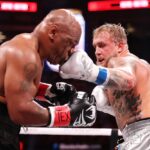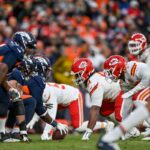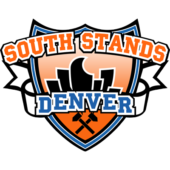The Andre Iguodala trade doesn’t make Denver better. By @smooth_operatah
One of the smartest, deepest basketball thinkers on Twitter, our pal @Smooth_Operatah blogs about the Nuggets recreationally.
When he crafts a gem we sometimes asks him if we can reproduce it here. Unlike some “bloggers” who cover the Nuggets, Smooth doesn’t just regurgitate perspective he gleaned from National writers and paste links (lookin’ at you, NBA Mistress). He writes with insight and passion. This week Smooth evaluated the Nuggets’ trade for Iguodala. Let’s just say he’s not doing the Iggy Shuffle.
Please read!
If you have been following me on Twitter at all for the past six months, you would be well aware that I am not in very much support of Denver’s roster moves. If you had read any parts of my previous two posts, you would find the same opinion throughout.
They traded a disgruntled “star” in Carmelo Anthony because each had had enough of the other. They included Chauncey Billups in the deal to maximize return trade value, even though he clearly wanted Denver his final basketball destination (which wouldn’t mean much if it were any other player, except that Denver is Chauncey’s home and he’s kind of a local legend and still incredibly productive to boot) and the Nuggets thought an as-yet untested and very undersized Ty Lawson (more on Lawson’s place in history in future posts) was ready to lead them into the future.
The very next season they re-signed Nene Hilario, Arron Afflalo, and Danilo Gallinari to long-term deals. Injuries set in during the months of February and March (as they typically do in every season, but, even more-so in a lockout-shortened slate where guys are playing as many as five games in six nights) and Denver panicked, trading Hilario for league laughingstock, JaVale McGee. (As an aside, unless there is acute attention paid to minute allocation during the season such as that employed by San Antonio with aging Hall-of-Famer Tim Duncan, injuries will pileup – especially with players as seemingly fragile as Nene.)
After signing his new contract last December, Nene had indicated in every available media outlet that he, like Billups, wanted Denver to be his first and last stop in the NBA – despite seeing teammate Carmelo Anthony make nearly twice the money for half the work most of his career, despite being forced to play nearly a full decade out of position, despite never being allowed to flourish due to playing out of position, despite playing with a ball-stopper in Anthony and an unconscionable chucker in J.R. Smith, despite playing alongside head-cases Kenyon Martin and Smith for most of his career, and despite being the very model of consistency and professionalism on and off the court. Denver management, feeling no loyalty to either Nene or Billups after living through one of the most tumultuous decades any NBA city has ever experienced, moved them in trades with very little feeling or remorse or nearly the return such players should garner. It is business, after all. Then, following yet another unsuccessful NBA Draft in June (because, let’s face it, the Nuggets haven’t drafted well since Kiki Vandeweghe took Jameer Nelson in 2004) where they acquired France’s relatively unknown Evan Fournier and another project in Baylor’s Quincy Miller, the Nuggets saw every other team in the Western Conference improve. Feeling a playoff berth next season slowly slipping through their fingertips, they panicked again, and traded the since re-signed Afflalo for Philadelphia’s Andre Iguodala. Why do I feel they panicked, you ask?
- 1) There is a very clear track record for doing so.
- 2) They were never once involved in the Dwight Howard talks until the final days when major players (Orlando, Los Angeles, and Philadelphia) needed a fourth team to take Andre Iguodala.
- 3) The league’s worst-kept secret is Denver’s lust for Iguodala – going at least as far back as two years ago when they were fielding offers for Carmelo Anthony. Every trade proposal they considered in the early-stages of talks with New Jersey revolved around Iguodala coming to the Nuggets. Now, fast-forward two years: The Lakers, Magic, and especially the Sixers knew of Denver’s infatuation with Iggy and took advantage by beautifully orchestrating a four-team deal involving the newly-minted gold medalist. I know Sixers President Rod Thorn and general manager Ed Stefanski knew about the Nuggets’ yearning for Iguodala (Thorn was in his first days on the job when Denver made overtures for the small forward in the Carmelo swap), and by extension, so did both Orlando and Los Angeles.
- 4) No one necessarily had use for Iguodala’s services, least of all Orlando. Because what utility could the Magic have for a 28-going-on-29 year-old swingman who can’t score and relies entirely on his athleticism for success? Remember, Rob Hennigan was tutored in the San Antonio Spurs organization. Orlando is in the midst of a full rebuild. Acquiring a nearly-30 year old NBA veteran ‘tweener’ who’s on the decline to anchor their team is foolhardy. And God knows Los Angeles has enough help on the wing. Denver was the only team that would take Iguodala.
- 5) The Nuggets didn’t put enough thought into the move itself because they weren’t involved until the final stages of talks – something that speaks very loudly to a franchise getting hoodwinked. For this reason and those mentioned above, Denver gave up its best remaining player and elite NBA shooting guard, Arron Afflalo.
I said last January on Twitter – much to the dismay of all my followers – that there were only four players I’d take over Arron Afflalo as my starting shooting guard. They were: James Harden, Eric Gordon, Kevin Martin, and Monta Ellis. Kobe Bryant wasn’t included. Dwyane Wade wasn’t, either (people were especially steamed about Wade’s exclusion). If I had to do that list over again today it would include James Harden. And end with James Harden. Klay Thompson will be on this list by the time the New Year rolls around, I have no doubt. However, I do not include Andre Iguodala in the field of potential shooting guards for one reason: He can’t shoot. From anywhere (outside of last year’s near-40% showing from behind the arc). Having the ability to shoot is kind of in the job description for a shooting guard. And for this reason, he has been used as point-forward out of the small forward position for the majority of his career. A point forward position I (wrongfully) assumed Denver was grooming Danilo Gallinari to take over. After all, the point forward is actually what pre-draft scouting reports listed him as coming out of Italy in 2008. As if drafting France’s Evan Fournier wasn’t a curious enough choice given he’s yet another versatile wing best used as a point-forward because he cannot shoot, Denver makes a trade for one more?
I mean, what does Denver have against shooters? (More on a player they missed in Summer League who could have easily made their roster but was ignored in future posts).
With this wealth of information as pretext, I will use my ensuing posts as explanation into the incalculable number of ways this was a bad trade for Denver, how much it frighteningly resembles the Nuggets’ last trade with Philly for another ‘A.I.’, and how they’re building a Fantasy Basketball Team instead of a real one. I assure you all of this will be thoroughly backed-up by quantitative evidence. I promise.
According to ESPN’s Tom Haberstroh, two franchises in the NBA have seen their win percentage decline each of the past three seasons. Northwest Division rivals Denver and Portland are those two teams. The Portland Trail Blazers are a franchise that’s been besieged by injuries the last three years. Their whole roster has seemingly been turned over. They haven’t been able to control their misfortune (see Greg Oden and Brandon Roy, among others). The Nuggets, on the other hand, have welcomed this roster turnover with open arms – believing they’re smarter than everyone else by trading ball-stopper Carmelo Anthony, oft-injured Nene Hilario, and drafting rebounding machine Kenneth Faried. I guess the proof is in the pudding. Denver doesn’t think size matters in basketball, for if they did, they might have reconsidered drafting Faried a mere two years after acquiring undersized point guard Ty Lawson in a draft day trade with Minnesota. I guess they were on the verge of panic, otherwise they might not have leaped headfirst into the three-team talks involving Dwight Howard.
Explanation:
I am not entirely sure the basketball population at-large is aware of just how good Arron Afflalo is as a player. But you can know one thing for certain: Rob Hennigan took notice. He had his eyes on Afflalo from the jump. It’s why the Lakers, Sixers, and Magic included Denver at the very tail-end of their negotiations. As I explained in part one three weeks ago, Denver was at an inherent disadvantage during the negotiations. And they paid for it — in full.
Since the league’s inception in 1946, when it was actually known as the Basketball Association of America, there have been ten players to post a 3-point field goal percentage greater than 40%, a field-goal percentage greater than 46%, and a free-throw percentage greater than 80% with a minimum of 873 3-pointers taken. Players like Steve Kerr, Steve Nash, B.J. Armstrong, Brent Barry, Jeff Hornacek, Mark Price, and Craig Hodges grace this list. Ray Allen? Not on the list. Jason Terry? Not on it, either. Dirk Nowitzki? Nope. Kevin Durant? Can’t locate him. What about the best pure-shooter from the point-guard spot in the game today, Stephen Curry? Nope. Kyle Korver? As if. J.J. Redick? That’s a good one. Arron Afflalo? Fat chance of that–err, wait a minute. Afflalo actually is listed. He’s listed sixth, in league history. I don’t see soon-to-be max-contract guy, James Harden, in those ten. I don’t even see potential Hall-of-Famer, Chauncey Billups, on that chart. Eric Gordon, Kevin Martin, Monta Ellis, Dwyane Wade, and Kobe Bryant are also nowhere to be found. Arron Afflalo is, though.
To put these numbers in proper context I should explicitly state that in sixty-six years of American professional basketball there have been just ten players to post similar shooting statistics to Arron Afflalo. I have no idea how many players have played the game since 1946. It must total upwards of 20,000 (I’m sure someone far smarter than myself can give a much closer approximation). If there have in fact been nearly-20,000 players to suit up in NBA history, that would mean Arron Afflalo was a member of an exclusive class of player — the 0.05%. And Denver traded him. With little thought. With little pause. And with little fanfare.
I first released these findings on Twitter at around 10:30 pm on Friday, September 7. The backlash was fierce and fast. I was criticized for having too small of a sample size. I was criticized for picking and choosing my categories for measuring success. I was accused of being everything under the sun. Some even brought Tim Tebow into the discussion — implying I was “cooking the numbers” to make Afflalo look better than he is. I was harangued and harassed for the remainder of the evening and have continued to be so in the weeks since Denver made this trade.
Since my initial criticisms of the franchise became known months ago, I have had to defend my point of view under ridiculous attacks from seemingly everywhere. Anonymous people with anonymous IP addresses who I have reason to believe work within Denver’s front office have been leaving disparaging remarks on my blog. I was considering deleting my Twitter account altogether a month or two ago, as my mentions filled with incalculable threats from various unknown outcroppings around the ‘Net. I have had followers secretly tell Nuggets players via Twitter that I am speaking ill of them as people and professionals. The scrutiny I have been under is ridiculous. Absolutely ridiculous.
I didn’t ask for this. I am not enjoying this. I have an undying love for the Denver Nuggets franchise because it saw me through some of the most difficult times I will likely ever face in my life. I don’t hate the team. I don’t hate the franchise. I don’t hate the players who suit up every night. I merely want them to be respected as the players they are and not asked to be players they are incapable of becoming.
All that said, in order to satisfy the ever-growing horde of detractors I am likely to face going forward, I reduced the sample size to include a minimum of 400 career 3-pointers made. Only two new names were added to the list, with one of them of particular note in the annals of NBA history:
Drazen Petrovic starred at shooting guard for the New Jersey Nets two seasons before being killed in an automobile accident at the tender age of 28. He was posthumously enshrined into the Naismith Basketball Hall-of-Fame in 2002, merely nine years after having his jersey retired by the Nets. New Jersey never overcame the death of Petrovic, outside of 2002 when Jason Kidd, Kenyon Martin, and Richard Jefferson led the team to a Finals berth.
Now, I should for all intents and purposes end my argument against the trade right here, right now. However, that would be doing a disservice to both Afflalo and the player he was traded for, Andre Iguodala. First, I will discuss Arron Afflalo and his contributions beyond shooting to Denver these last three years. Then, I will further explore what Andre Iguodala’s role should be going forward in Denver. Look for that tomorrow.
Thanks for reading.







